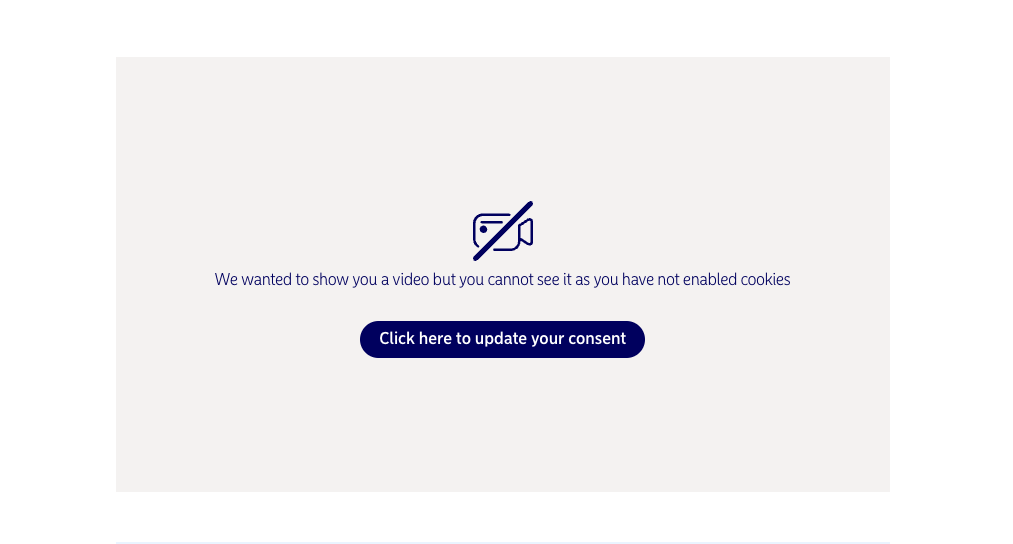In the rapidly evolving digital landscape, enhancing user experience (UX) and staying ahead of the curve are integral parts of my role as a UX lead. Laws like GDPR and Schrems II make it clear that we need to change our approach on how to inform the visitor about the website cookies.
The problem at hand
Traditionally, users are met with cookie consent pop-ups upon their initial visit to a website. Although this approach is essential for compliance, it can also overwhelm users, leading to uninformed decisions about accepting or rejecting cookies. More critically, users may experience a degraded UX when certain functionalities tied to these cookies fail to work due to their choices.
When it comes to understanding the implications of accepting or rejecting cookies, things can get complex for users. The language used in cookie consents can often be technical and confusing. Users may not fully comprehend the consequences of their decisions, particularly the fact that rejecting certain cookies might cause specific functionalities on the website to cease working.
This lack of clarity and the immediate need to make a decision can lead to what’s known as “consent fatigue.” Users, eager to access the website content, may hastily accept all cookies without understanding what that entails or, conversely, reject all cookies, potentially disabling features that would have enhanced their browsing experience.
As a result, the very tool intended to protect users’ privacy and control over their data can inadvertently lead to a compromised user experience.
The Cookie Bundling Dilemma
As we navigate the complexity between data privacy and user experience, we encounter an important, often overlooked issue: the dilemma of bundled cookie consents. A common scenario illustrates this perfectly: a user wants to watch an embedded YouTube video but to do so, they must activate an entire category of analytics cookies. In essence, the user is compelled to accept a whole package of cookies, far beyond what they need for their intended purpose.
Such bundling of cookies into non-specific categories could be perceived as a coercive practice, as it forces users to accept more than they may want. One might suggest separating these ‘feature-specific’ cookies into different categories to allow users to select the cookies they want. However, even this practice often results in bulk acceptance, which doesn’t fully address the issue.
Close your eyes?
Today, the common solution handle this is to either hide these non-functioning features or ignore the reduced functionality, leaving the user oblivious. However, both these practices leave much to be desired from a UX perspective – they can cause confusion or even disappointment when users don’t get the full experience they might have anticipated.
Addressing the Elephant in the Room
To combat this, I propose a straightforward solution: inform users upfront about the cookies required for each feature. A clear message could read: “To use this feature, you need to activate ‘Category X’, which also includes: [List of cookies].” This way, users are aware of their choices and can make an informed decision.
Let’s envision a more user-centric strategy, where real-time information is provided about the features users can’t access due to their cookie settings. Each non-functioning feature or piece of content could include a tailored message explaining why it’s unavailable and which specific cookies need to be enabled for its functionality. This information empowers users to make informed decisions without feeling pressured – they could choose to update their cookie preferences immediately if they wish.

An screenshot showing a feature disabled due to non-consent of cookies, illustrating the need for more detailed cookie information.
This approach aims to strike a balance between UX and data privacy, providing users with a transparent view of how their decisions impact their browsing experience. It’s about empowering them and enabling them to get the best possible experience based on their personal preferences and comfort levels with different types of cookies.
Conclusion
While my suggestions may not necessarily map out the exact future of UX design, I believe that the focus on transparent and user-controlled cookie practices will play a key role in shaping how websites are built and how users interact with them.
Remember, at the end of the day, the user’s trust and their willingness to interact with your website rely on how well you respect their privacy and provide them with control. Adopting a user-first approach to cookie consent is, therefore, not just good ethics—it’s good business.
After all, UX design should always be about respecting user privacy and offering the best possible experience.